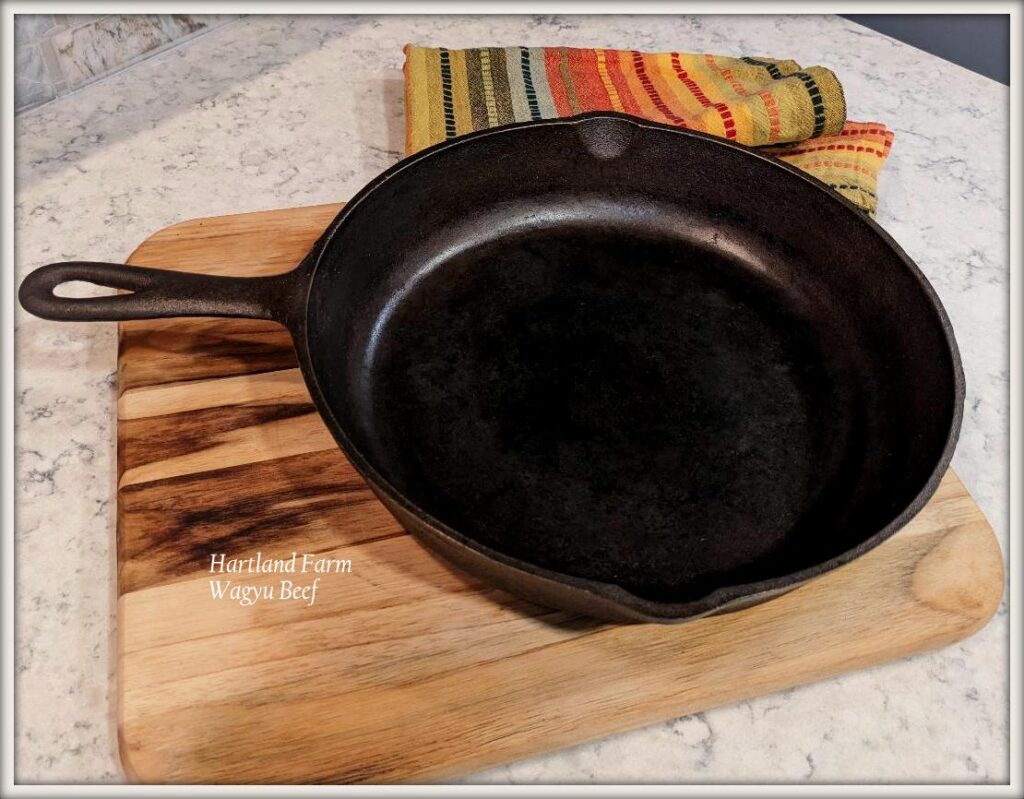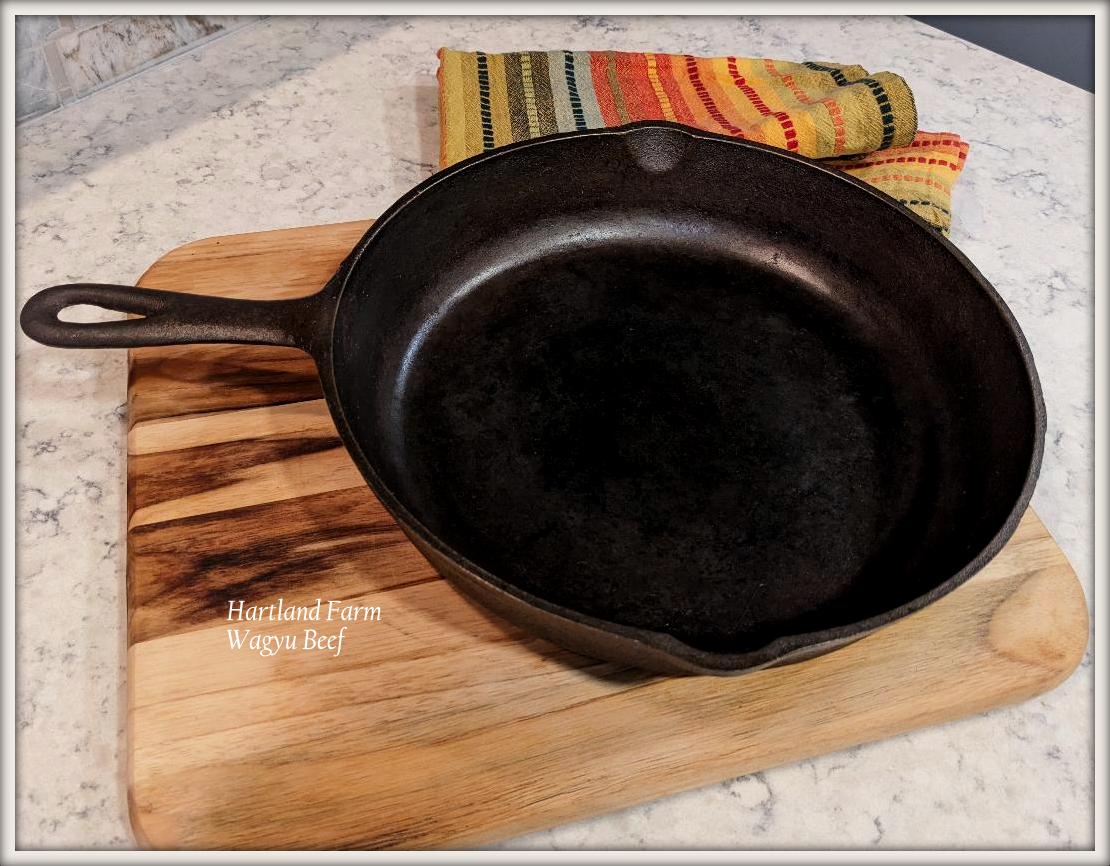I thought it was high time to purchase a cast-iron skillet. I wanted an old skillet, one that came with a story perhaps. As luck would have it, my husband and I visited Half & Half Antique Store in Latonia, KY. The store is immaculate and well-organized, and it was here where I found my new – old cast-iron skillet. The next step was to learn how to clean and season the pan. I read about it online, but having an expert on hand, Randy Kelly the owner of the shop, to guide me was a wonderful bonus.

Cleaning a Cast-Iron Skillet
This pan is in perfect condition, not a bit of damage, rust, or flaws. I can tell whomever owned it previously cared for it well. It’s wonderful to imagine all of the meals that were prepared in this pan. Now it’s my turn, to care for it, create some marvelous meals, and then, perhaps, pass it along to the next owner. As well cared for as the pan is, Randy did suggest a gentle cleaning before seasoning the pan.
This was an easy task. Just a tiny amount of soap and a soft brush was all it took to clean the pan. Should, when I cook, find a few bits stuck to the pan, I will simmer some water in the pan to release them, rinse, and scrub with a clean scraper (not steel wool!).
Seasoning the Cast-Iron Skillet
Seasoning the Cast Iron Skillet
Before cooking, season your cast-iron. This process gives your cast-iron a deep, rich, black patina, prevents food from sticking to the surface, and protects the pan from rust. After washing the pan, I dried it with a lint-free dry cloth. I then applied a very thin coat of vegetable oil, using a clean paper towel. I coated the entire surface of the pan, top bottom, even the handle. With one more pass of the paper towel I ensured there was no excess oil on the pan’s surface: it felt practically dry to the touch. I placed the pan upside down in a preheated oven of 350 degrees, with a sheet of foil on the lower shelf to collect any excess oil released from the pan. I baked the pan for an hour, turned off the heat, and let the pan cool in the oven.

